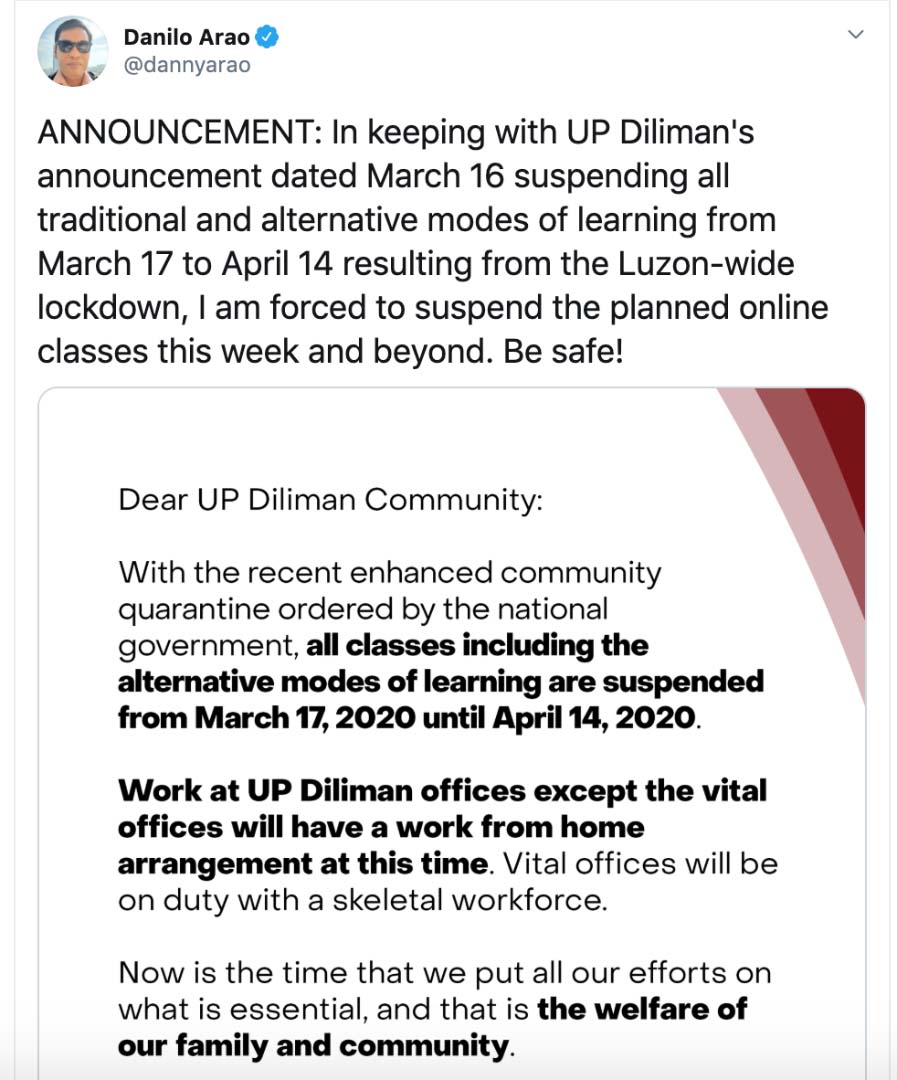Based on empirical data, e-learning is not for everyone given the unequal economic status of students. Internet access is not for everybody. Even if mobile telephony is ubiquitous, the low purchasing power of families makes it expensive to maintain good data connection in the students’ mobile phones.
By DANILO A. ARAO
Bulatlat.com
N.B. – A media and communications specialist from New Zealand asked me five questions on how e-learning is done in the Philippines. Here are my answers.
1. How are your students keeping in touch?
Students keep in touch mainly through the Internet, so it can be challenging for those who don’t have access to it. Unlike NZ, the Philippines has a relatively low Internet penetration rate of only a little more than 50 percent. You also have to understand that our Net connection is one of the slowest in the world, and quite expensive too in relation to our low minimum wage.
My students at the University of the Philippines (UP) Diliman and Polytechnic University of the Philippines (PUP) Sta. Mesa keep in touch mainly through text messaging and email. In cases where I know their Facebook accounts or Twitter handles, I send private messages. Prior to the lockdown imposed by the Duterte administration, I somehow did a good job avoiding social media in communicating with students. But now things are different and I am forced to do so because students tend to check their social media accounts more often than their email accounts.
2. What stories are they doing?
Depending on their professors, they are usually asked to meet the academic requirements agreed upon before the lockdown (please note that the second semester for many higher education institutions in the Philippines started last January, so we were close to the midterm period when the lockdown was imposed). There is, however, flexibility when it comes to deadlines and there are also cases where requirements are adjusted to ensure, for example, that students won’t have to go out of their houses to conduct data gathering and interviews.
At UP Diliman and PUP, the suspension of online classes and academic activities results in putting on hold (at least for now) the giving of assignments to my students. In the case of PUP where the second semester was supposed to end last March, I already cancelled the final examination and computed the final grades based on their academic standing before the lockdown. In the case of my students at UP Diliman, there is nothing that prevents them from working on pre-lockdown assignments on their own. However, I advised my students to take care of their health and safety first, as well as that of their loved ones. The entire country (or the entire world for that matter) is in survival mode so classroom activities or grades should be the least of their concern.
3. How is the internet for teaching?
Based on empirical data, e-learning is not for everyone given the unequal economic status of students. Internet access is not for everybody. Even if mobile telephony is ubiquitous, the low purchasing power of families makes it expensive to maintain good data connection in the students’ mobile phones. In other words, the technology literally in their hands is not maximized due to the lack of money in their pockets.
The low Internet penetration rate in the country makes it very challenging for us to use the Internet for distance learning or e-learning. This is one of the many reasons why UP and PUP are forced to suspend to suspend online classes for the duration of the lockdown (and would be inclined to do so again if the lockdown gets extended).
For my part, I still use the Internet for teaching. I conducted an online lecture on “fake news” amid the pandemic last month and will conduct another online lecture on media literacy tomorrow (April 8). These lectures, however, are open to the public and my students are NOT required to attend.
4. What platforms or software are they using?
The platforms vary depending on the university. If you want to be technical about it, Moodle is quite common as a “virtual classroom” of sorts. Consultations and group meetings are done through popular platforms like Google Hangouts and Skype. Right now, Zoom is fast catching up as a go-to platform for webinars, fora and class meetings. Social media like Facebook and Twitter are, on the other hand, used for announcements, particularly FB Messenger app to create group chats (GCs).
Right now, I use social media (particularly Facebook and Twitter) for engaging the public in a discussion on burning issues of the day. For online lectures, I use Zoom given its ubiquity and functionality (while adjusting its settings to ensure that privacy will be somewhat protected).
Before the lockdown, I did not upload posts on my blog as much as I want to due to my hectic schedule. But right now I have been using it also for public engagement to complement my posts on social media. In this context, we could say that WordPress is another platform I am using right now.
5. How are they coping with the stress?
Just like the peoples of New Zealand (NZ), we are very stressed given the uncertainty. What compounds our worries is the inefficiency of our government in handling the crisis. While NZ is lucky to have a Jacinda, we are practically cursed for having a Duterte.
Filipino humor is at its best right now as we try to cope with the stress. But the widespread militancy is evident as hashtags like #OustDuterte and #ICantStandthePresident become trending topics not just here but also worldwide. Every now and then, we call out not just Duterte but some government officials and Duterte supporters for their sense of privilege and outright incompetence.
For many UP and PUP students, they cope with the stress the best way they know how – fighting the injustice and looking for creative ways to register publicly their sentiments. Of course, just like other concerned Filipinos, our students also do their share in helping those in need. There are also students who work as frontliners, risking life and limb to help ensure that the crisis would soon be over.
In the Philippines, please remember that we are battling two viruses (i.e., COVID-19 and another one elected in 2016).
The post 5 questions on e-learning and fighting the pandemic appeared first on Bulatlat.




